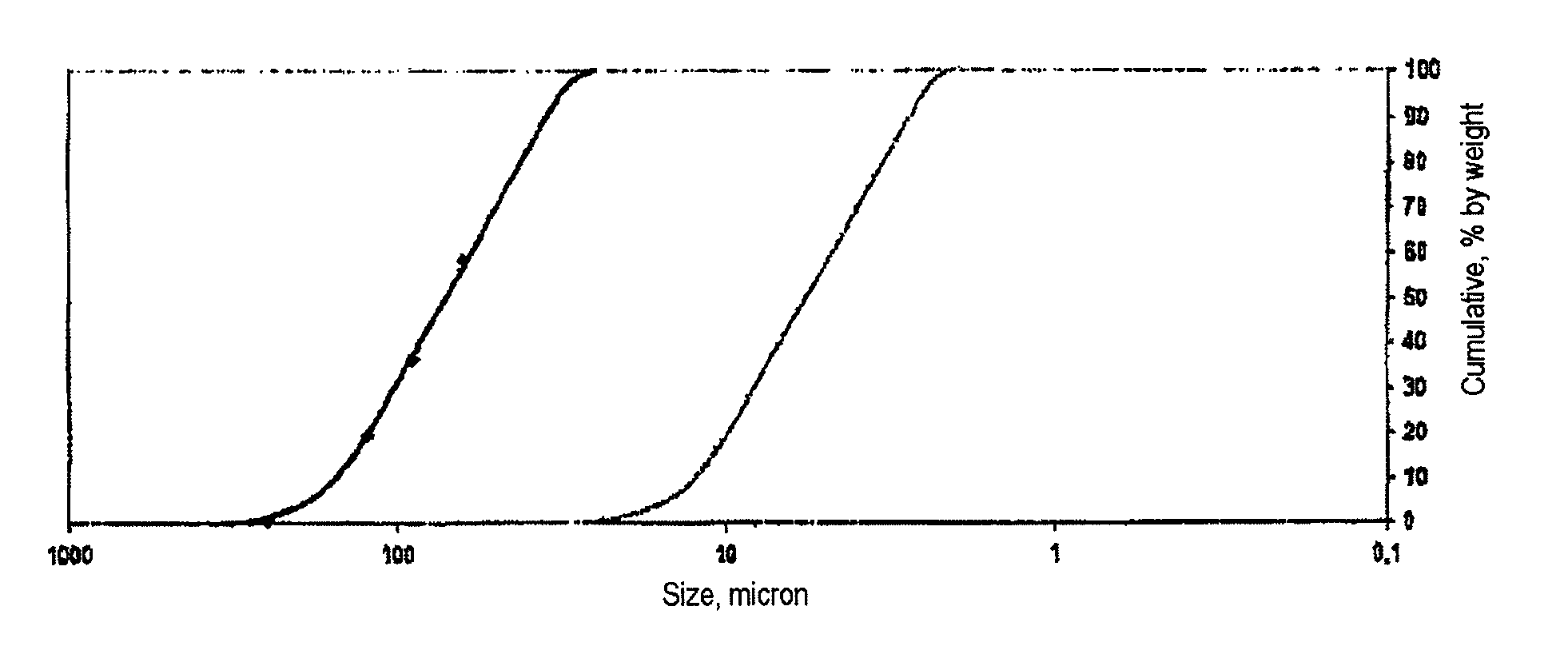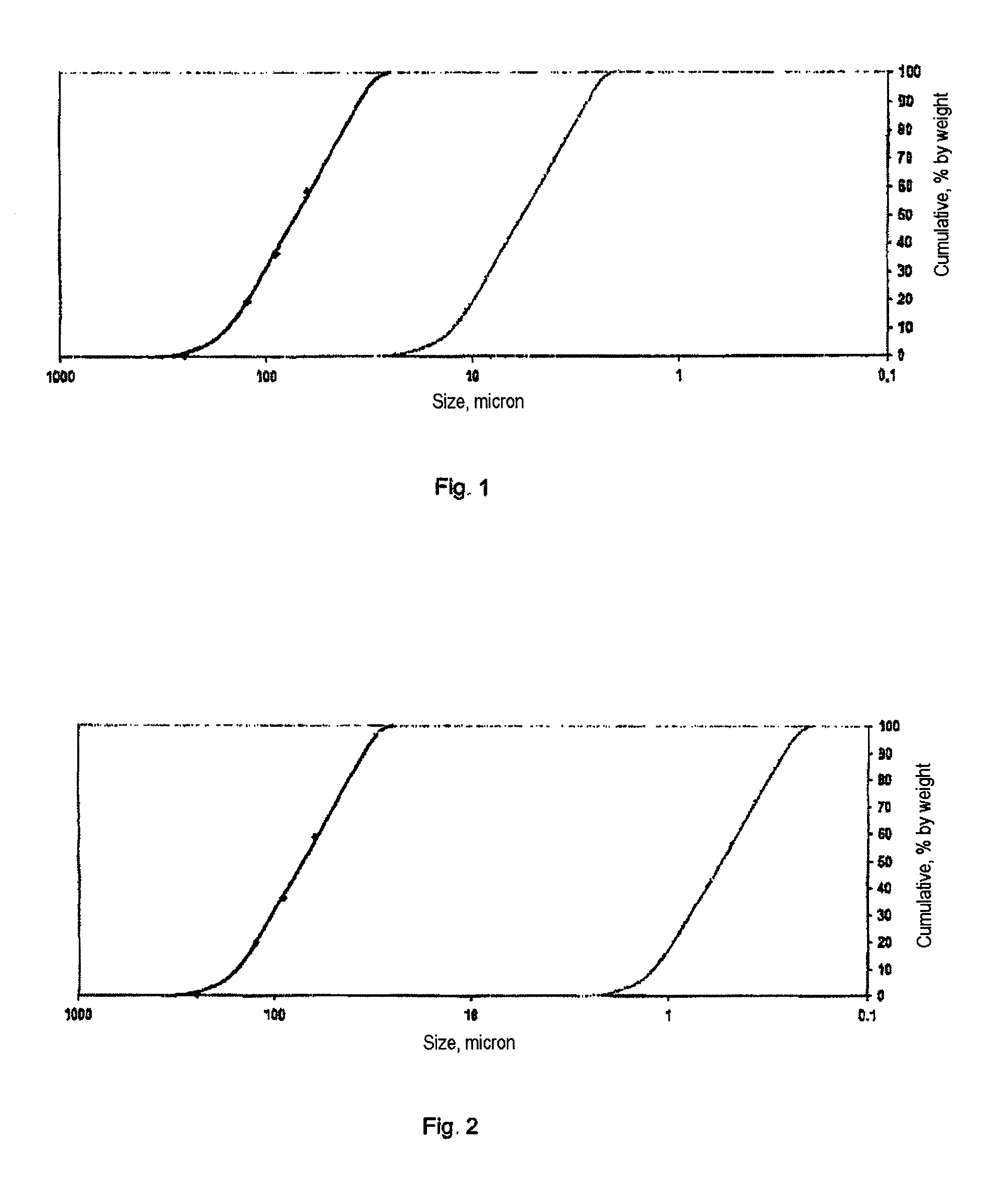Hyper-fine cement
a technology of hyperfine cement and cement slurry, which is applied in the direction of cement mixing apparatus, clay preparation apparatus, lamination, etc., can solve the problems of only possible wet milling using water, unusable cement formed, and inability to use process, so as to improve the fire resistance of polymer materials
- Summary
- Abstract
- Description
- Claims
- Application Information
AI Technical Summary
Benefits of technology
Problems solved by technology
Method used
Image
Examples
example 1
[0057]40 g of portland cement were mixed with 6 g of triethanolamine as grinding aid. The mixture was then dispersed in 15 g of isopropanol, analytical reagent, as fluid milling medium (wet milling process). The weight ratios of the components were as follows: cement: 65.57%, triethanolamine: 9.84%, isopropanol: 24.59%. The mixture was introduced into a Retsch Cup Mill containing zirconia balls and milled for 2 hours at 500 rpm, alternating cycles, using the following milling conditions:
[0058]
Amount of milling media (balls):120 g (correspondsto 3 g / g of cement)Size of milling media (balls): 3 mmMilling speed (from 110 to 600 rpm):500 rpmMilling time120 min
[0059]After the end of the milling cycle, the balls were separated off by wet sieving using isopropanol, analytical reagent. The hyper-fine cement obtained was dried by evaporation of the alcohol. The particle size distribution and the D50 of the hyper-fine cement are shown in FIG. 2.
example 2
[0060]The procedure of Example 1 was repeated except that 1.5 g of milling media / g of cement were used instead of 3 g of milling media / g of cement and balls of various sizes (2 balls of 20 mm, 10 balls of 10 mm, 150 g of balls of 3 mm) were used instead of balls having a size of 3 mm.
[0061]The particle size distribution of the hyper-fine cement obtained was as in Example 1. The use of a combination of various sizes for the milling media thus makes it possible to achieve the same results in terms of the particle size distribution at a lower weight ratio of cement to milling media.
PUM
| Property | Measurement | Unit |
|---|---|---|
| particle size D50 | aaaaa | aaaaa |
| weight ratio | aaaaa | aaaaa |
| weight ratio | aaaaa | aaaaa |
Abstract
Description
Claims
Application Information
 Login to View More
Login to View More - R&D
- Intellectual Property
- Life Sciences
- Materials
- Tech Scout
- Unparalleled Data Quality
- Higher Quality Content
- 60% Fewer Hallucinations
Browse by: Latest US Patents, China's latest patents, Technical Efficacy Thesaurus, Application Domain, Technology Topic, Popular Technical Reports.
© 2025 PatSnap. All rights reserved.Legal|Privacy policy|Modern Slavery Act Transparency Statement|Sitemap|About US| Contact US: help@patsnap.com


